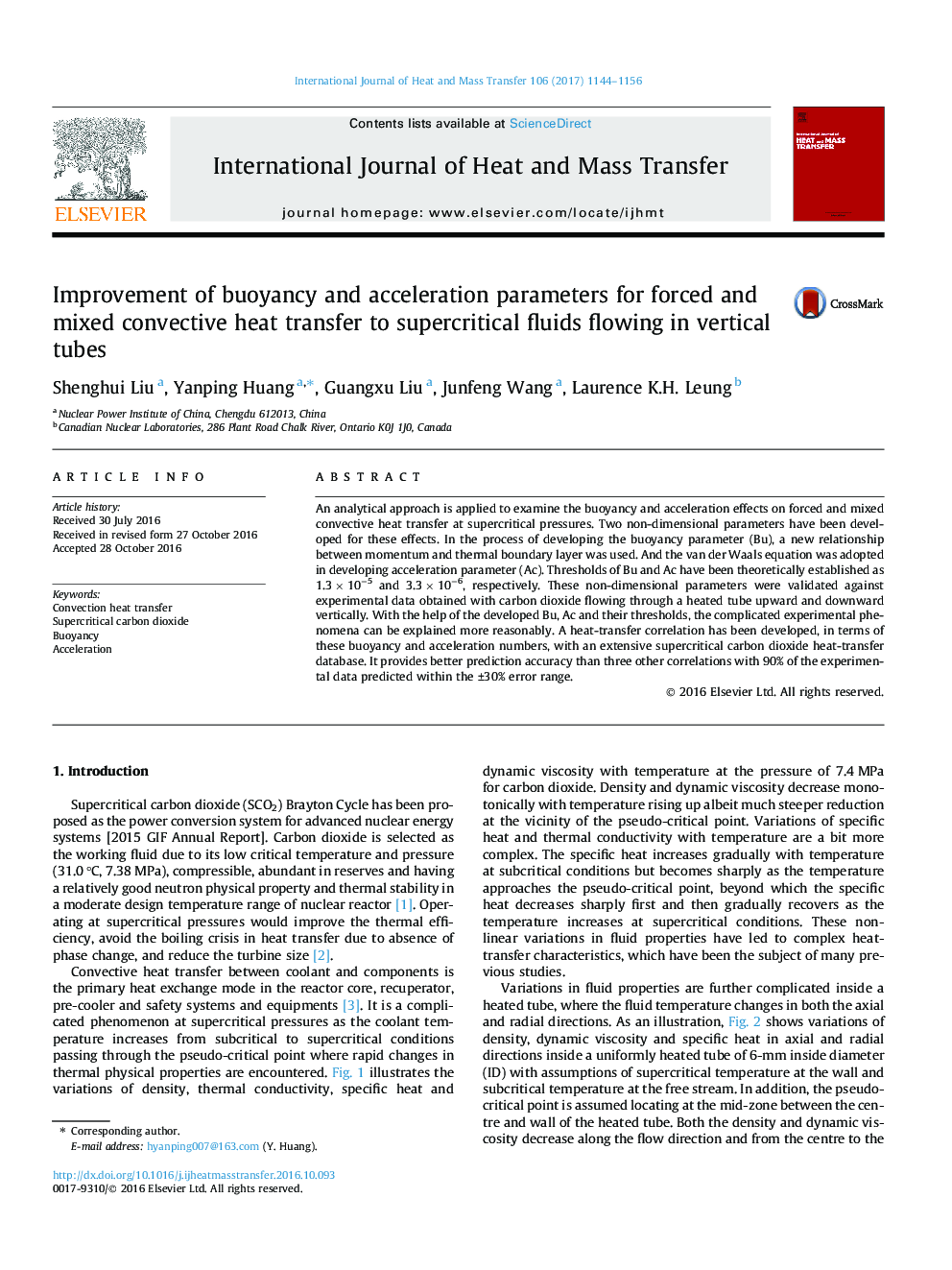| Article ID | Journal | Published Year | Pages | File Type |
|---|---|---|---|---|
| 4994839 | International Journal of Heat and Mass Transfer | 2017 | 13 Pages |
Abstract
An analytical approach is applied to examine the buoyancy and acceleration effects on forced and mixed convective heat transfer at supercritical pressures. Two non-dimensional parameters have been developed for these effects. In the process of developing the buoyancy parameter (Bu), a new relationship between momentum and thermal boundary layer was used. And the van der Waals equation was adopted in developing acceleration parameter (Ac). Thresholds of Bu and Ac have been theoretically established as 1.3 Ã 10â5 and 3.3 Ã 10â6, respectively. These non-dimensional parameters were validated against experimental data obtained with carbon dioxide flowing through a heated tube upward and downward vertically. With the help of the developed Bu, Ac and their thresholds, the complicated experimental phenomena can be explained more reasonably. A heat-transfer correlation has been developed, in terms of these buoyancy and acceleration numbers, with an extensive supercritical carbon dioxide heat-transfer database. It provides better prediction accuracy than three other correlations with 90% of the experimental data predicted within the ±30% error range.
Related Topics
Physical Sciences and Engineering
Chemical Engineering
Fluid Flow and Transfer Processes
Authors
Shenghui Liu, Yanping Huang, Guangxu Liu, Junfeng Wang, Laurence K.H. Leung,
